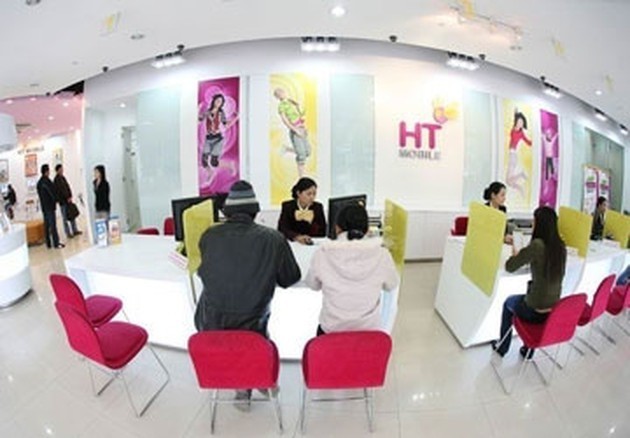Vietnam’s 2G decision paved way for digital growth
2020/10/13
In 1993, despite many dificulties, Vietnam decided to choose GSM (The Global System for Mobile Communication) technology for a mobile network. It was one of a few countries pioneering 2G.
The lesson about choosing the right technologies
1990 and 1991 were the years the post and telecommunications sector prepared for the acceleration period. Foreign investment increased rapidly. The demand for mobile communication services began appearing, especially in HCM City.

At that time, the General Directorate of Post was considering bringing mobile information services to Vietnam and it contacted partners, including SingTel, Alcatel, Siemens and Ericsson, about the implementation of the plan.
In 1991-1993, GSM technology was applied in many European countries, but it was still in the process of completion, so it was still not commercialized on a large scale.
As such, Vietnam had to decide which technology would be suitable to Vietnam.
At that moment, 95-97 percent of the telecommunication networks in the world were still using analog technology. Some countries began shifting to digital technology and wanted to sell technology to Vietnam.
The leaders of the General Directorate of Post had to have many discussions to decide which way to go. And they finally decided that Vietnam needed to go straight to digital technology.
According to Mai Liem Truc, who was then the head of the general directorate, Vietnam decided to choose mobile information technology GSM
.
However, the technology was facing obstacles during the commercialization process, terminal devices were still incomplete. and were expensive, up to thousands of dollars each.
Some experts suggested choosing the global mobile satellite technology. Its advantage was that it could be used everywhere in the world, though the terminals were bigger than those for other technologies.
The technology was invested in and developed in the US and Europe by power groups, including Iridium Global Star. Service providers fired more than 60 low-range satellites (similar to base transceiver station - BTS) into satellite orbit, about 10,000 km from the earth, to ensure roaming for mobile subscribers.
The technology had a lot of advantages and the General Directorate of Posts considered using it. After considering a series of factors, including market size, technology and terminals, it found that GSM would be more convenient for management.
It was cautiousness that helped Vietnam avoid risks. The global mobile sattellite technology failed. Meanwhile, GSM was successfully commercialized and began developing rapidly all over the globe when the prices of network equipment and terminals decreased rapidly.
In 1992, the General Directorate of Posts negotiated with partners in a plan to deploy GSM all over the country. In July 1993, Alcatel was chosen as the device manufacturer to deploy the first mobile network in Hanoi.
In late 1993 and early 1994, GSM was available in HCM City with Ericsson as the partner.
In 1994, the GSM network was established and services were officially provided in some large cities. The technology chosen based on European and ITU standards was brought to Vietnam.
Truc affirmed that Vietnam was one of only a few countries in the world that first deployed 2G.
“When Vietnam began deploying 2G GSM, only several North European countries were using the technology,” Truc said.
Market potential
Do Trung Ta, former Ministr of Posts and Telematics, said that choosing the right technologies suitable to the market was not a simple matter and the decision would have big impact on the development of mobile networks using that technology.
In 1990, Vietnam rejected the Analog mobile network (AM) offered by Singtel and the technology later did not develop.
In Vietnam, while VinaPhone and MobiFone chose 2G GSM, other mobile network operators, including SPT, Hanoi Telecom and EVN Telecom, chose CDMA technology.
CDMA was highly appreciated by technology experts compared with GSM. However, it had a sad ending in Vietnam.
The problem was that though CDMA was good, it appeared late, when GSM accounted for 86 percent of the world’s market. It would be unreasonable to use the technology used only in a few countries, including Japan, South Korea, Hong Kong and the US.
And finally, all the networks using CDMA had to leave the market.
In early 2005, Motorola and Intel cooperated to develop WiMax. The mobile network operators in the US also supported the technology, while Europe followed 4G LTE.
At that time, WiMax was believed to be the next-generation wireless technology thanks to the high-speed data transmission cpaability (1Mb/s – 5Mb/s) and large coverage (22 kilometers).
The broadband technology’s capability was stronger than Wi-Fi (based on 802.11 standards). Particularly, WiMax had costs much lower than other mobile technologies. In Vietnam, WiMax was tried by some firms to give overall assessments about the technology.
However, Vietnam finally decided to choose 4G LTE (Long term Evolution) for 4G, not WiMax.
Experts stressed that the right choices of 2G GSM and 4G LTE helped Vietnam avoid ‘technological accidents’ which may have cost a lot of money.
They pointed out that when considering technologies, Vietnam not only considered the preeminence of technologies, but also the market penetration capability. Vietnam was correct when it chose the European technologies.
How about 5G?
On January 1, 2020, the first video call using the 5G connection line on gNodeB transceiver, researched and produced by Viettel, was successfully implemented. Vietnam had officially mastered 5G network technology.
From now on, Vietnam will actively take the lead in terms of technology development, as well as develop a roadmap 2G mobile technology elimination beginning in 2022.
Thai Khang
Reference: https://vietnamnet.vn/en/feature/vietnam-s-2g-decision-paved-way-for-digital-growth-679918.html
